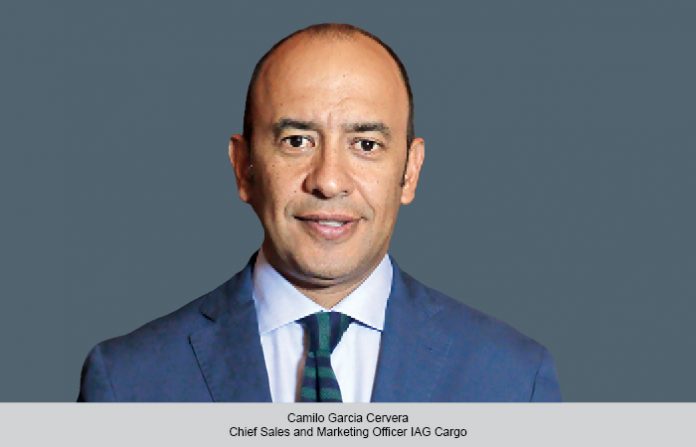India has been the most consistent performer in our global network. IAG Cargo has seen rise in transportation of wide range of automotive parts and components, including engines, transmissions, semiconductors, and body panels, across our network, says Camilo Garcia Cervera, Chief Sales and Marketing Officer.
Ritika Arora Bhola
How is IAG Cargo utilising belly capacity to improve air cargo efficiency? Could you please elaborate on the space available in pax aircraft for cargo?
While the operating environment continues to evolve, we are focusing on improving our efficiency, while enhancing our plethora of services, which have increased compared to last year. Specifically in India, we offer 56 weekly flights, utilising wide-body aircraft from five key destinations, providing direct connections to London and onto the wider IAG network. Our skilled teams on the ground ensure we optimise every aircraft. Their
dedication and collaboration with customers have led to 11 per cent increase in tonnage in the first five months of 2024 compared to the same period in 2023 for India, Sri Lanka, and Maldives.
Does India have enough cargo load for pax aircraft, P2Fs, freighters, or industry is waiting for the capacity to return to normal?
India has positioned itself as a global hub for manufacturing, which is due to the country’s growing economy and various government initiatives. The country has become a global producer of pharma, perishables, healthcare, automotive, and aerospace, among others. While there were disruptions during the pandemic, the industry is adapting and has been increasing capacity to support Indian businesses.
Tell us about your cargo operations to and from India. What kind of cargo is being moved?
IAG Cargo provides cargo services to and from India through our operations in New Delhi, Mumbai, Hyderabad, Bengaluru, and Chennai. In recent years, the hi-tech manufacturing industry in India has grown, leading to an increase in the semiconductor production, a trend that is evident in our network. India exports large quantities of fruits, vegetables, and flowers, and is one of the largest producers of pharmaceuticals. In fact, 13 per cent of our total cargo volume from India in 2023 was ferried via our Constant Fresh products, up from 9 per cent the previous year. This product is designed for fresh produce. We are also seeing a rise in transportation of a range of automotive and spare parts, including engines, transmissions, semiconductors, and body panels, across our network. India has been the most consistent performer within our global network. Its consistency is driven by the diversification of the manufacturing base into all the verticals and sectors that we operate in and are critical to our business.
Do we have enough freighters in India? Narrowbody or wide-body, which is most suitable for Indian market?
Our business model allows us to transport goods via the belly hold of the Group’s five airlines. With a fleet of over 500 aircraft, it is a model that provides us with fantastic capacity and global reach. In India, we use wide-body aircraft to transport large quantities of pharmaceuticals, perishables, and automotives to and from India.















